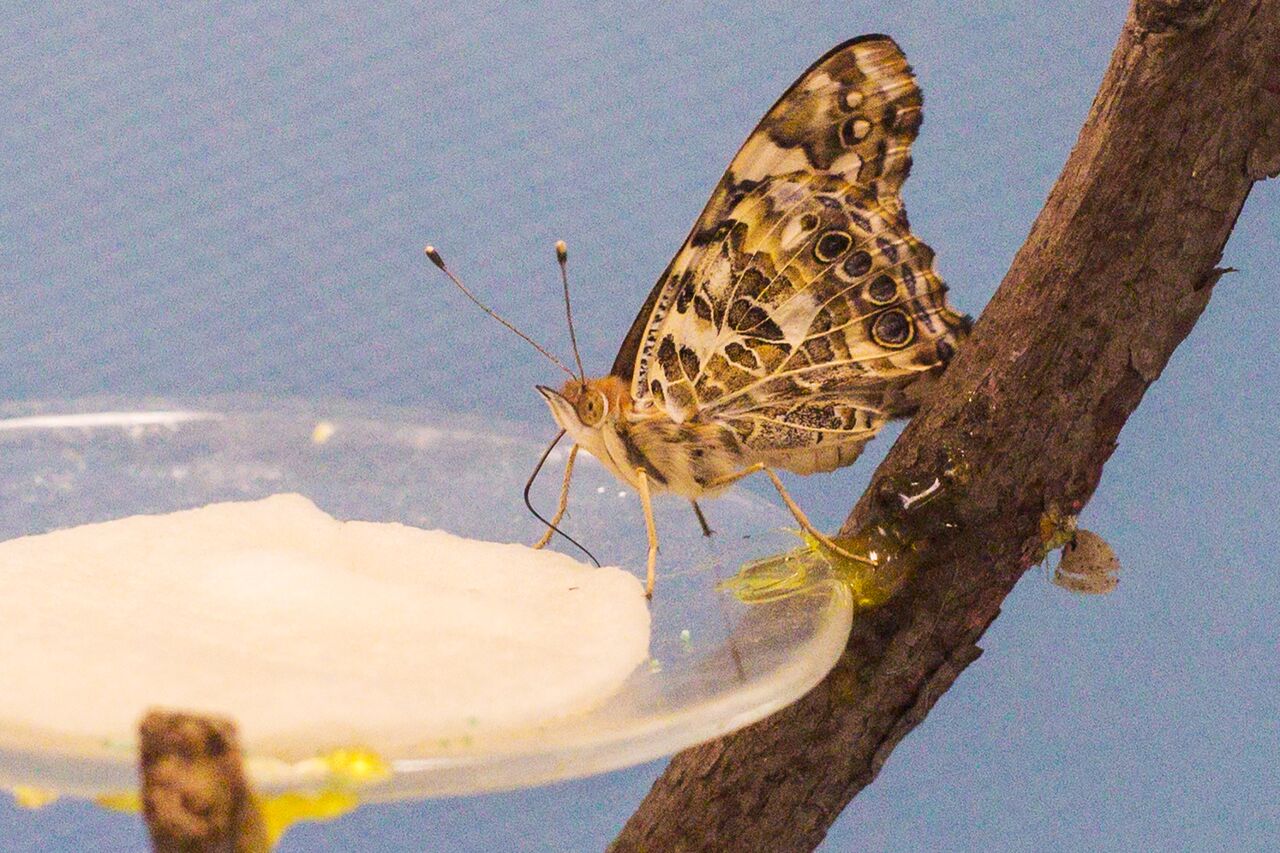 (Sacramento State/Jessica Vernone)
(Sacramento State/Jessica Vernone)Some small, colorful visitors have taken up temporary residency in Sacramento State’s Sequoia Hall lobby.
Painted lady butterflies are the latest inhabitants of the Biology Department’s Living Exhibit. Each semester the department features a living item for the lobby display case. This fall, biologist Merrill Roseberry decided to let the life cycle of the butterfly unfold in real time. “I thought it would be an interesting process for people to watch,” she says.
About 25 of the critters are feeding, flittering and generally enjoying the good life inside a temperature controlled environment. The exhibit is open to the public when Sequoia Hall is open, 8 a.m. to 6 p.m.
The painted lady somewhat resembles a small version of the monarch butterfly, featuring orange, black and white markings. It has a short life span – about three to five days as an egg, seven to 10 days as a caterpillar, another seven to 10 days in the chrysalis or cocoon, and then two to four weeks as a butterfly.
“They go through a massive cellular change in the chrysalis,” Roseberry says. “They almost liquefy and then reform into a different animal.”
They emerge wet, cold and tired. “Within about 24 hours they dry out and are healthy, happy butterflies,” Roseberry says.
Their first order of business: ensure the continuation of the species. “They start mating almost immediately after they emerge,” Roseberry says.
Since the painted ladies have small feeding territories, they tend to stay in the same area while mating, using the “perch and patrol” method. The male patrols his area and when he spots a female he approaches, then backs off and waits, approaching again, and backing off again. “After a while he will either give up, or she will become receptive,” Roseberry says.
The female will lay up to 500 eggs, which appear as tiny, mint-green specks. Roseberry collects those, and when they hatch, the caterpillars are placed in the exhibit to begin the process anew.
Painted ladies are found throughout the world and have a long migration route from Mexico north along the length of California. It takes several generations of painted ladies to go up and back.
In the wild the painted lady feeds on nectar. While it will partake from a variety of plants, mimosa is its favorite. In Sequoia Hall’s display case it has a steady supply of sugar water that it drinks by dipping its long proboscis into saturated cotton pads.
The Biology Department has reached out to area schools for possible visits, and any group that passes through Sequoia Hall on other matters makes a stop at the exhibit.
This is the third display in the Living Exhibit series, which started with the popular corpse flower and continued with a large ant farm. Roseberry is in the process of getting buttonquail for next semester.
For more information, visit the Biology Department at www.csus.edu/bios or call Roseberry at (916) 278-6535. For media assistance, call the University’s Public Affairs office at (916) 278-6156.– Craig Koscho
In the media:
